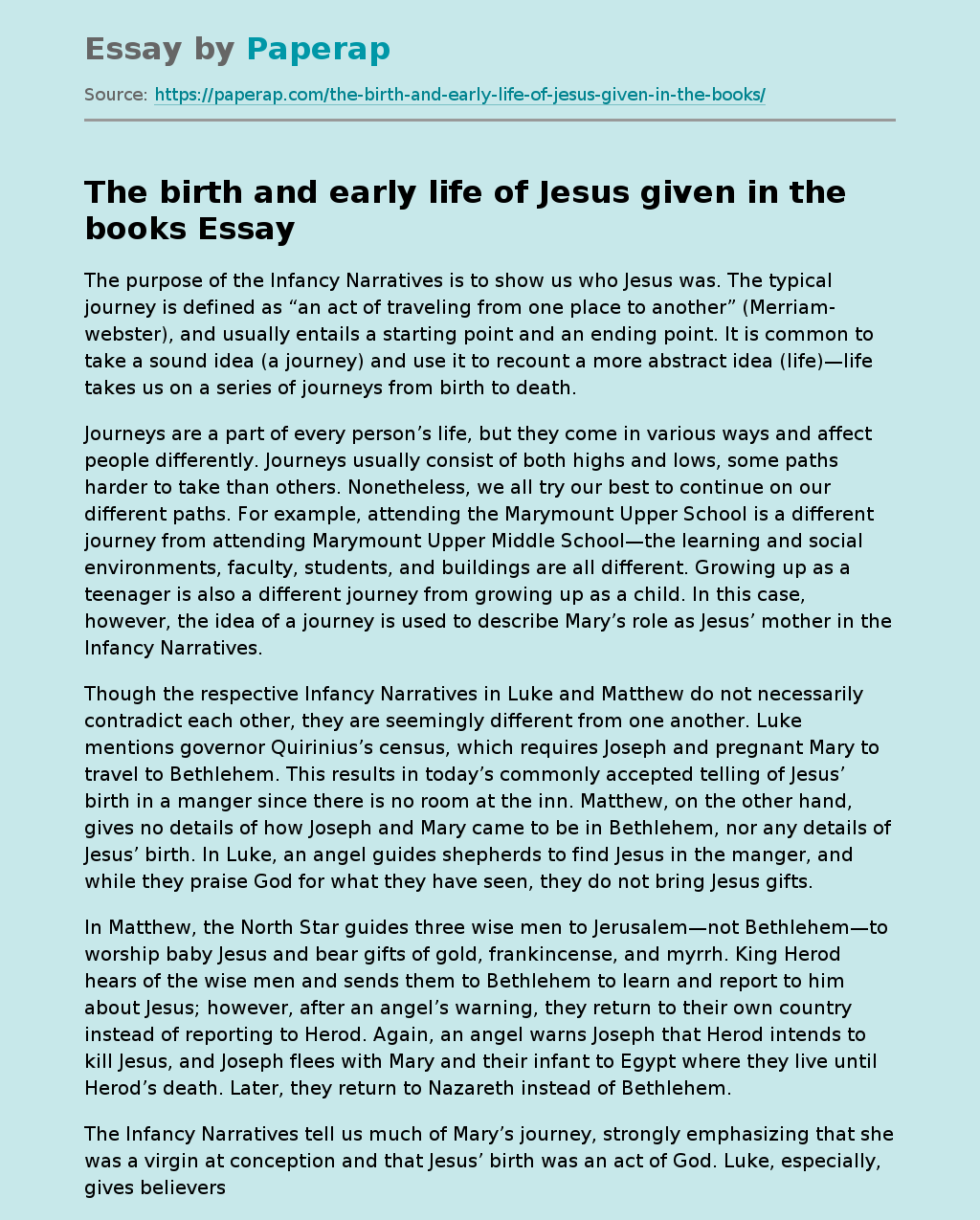The birth and early life of Jesus given in the books
The purpose of the Infancy Narratives is to show us who Jesus was. The typical journey is defined as “an act of traveling from one place to another” (Merriam-webster), and usually entails a starting point and an ending point. It is common to take a sound idea (a journey) and use it to recount a more abstract idea (life)—life takes us on a series of journeys from birth to death.
Journeys are a part of every person’s life, but they come in various ways and affect people differently.
Journeys usually consist of both highs and lows, some paths harder to take than others. Nonetheless, we all try our best to continue on our different paths. For example, attending the Marymount Upper School is a different journey from attending Marymount Upper Middle School—the learning and social environments, faculty, students, and buildings are all different. Growing up as a teenager is also a different journey from growing up as a child.
In this case, however, the idea of a journey is used to describe Mary’s role as Jesus’ mother in the Infancy Narratives.
Though the respective Infancy Narratives in Luke and Matthew do not necessarily contradict each other, they are seemingly different from one another. Luke mentions governor Quirinius’s census, which requires Joseph and pregnant Mary to travel to Bethlehem. This results in today’s commonly accepted telling of Jesus’ birth in a manger since there is no room at the inn. Matthew, on the other hand, gives no details of how Joseph and Mary came to be in Bethlehem, nor any details of Jesus’ birth.
In Luke, an angel guides shepherds to find Jesus in the manger, and while they praise God for what they have seen, they do not bring Jesus gifts.
In Matthew, the North Star guides three wise men to Jerusalem—not Bethlehem—to worship baby Jesus and bear gifts of gold, frankincense, and myrrh. King Herod hears of the wise men and sends them to Bethlehem to learn and report to him about Jesus; however, after an angel’s warning, they return to their own country instead of reporting to Herod. Again, an angel warns Joseph that Herod intends to kill Jesus, and Joseph flees with Mary and their infant to Egypt where they live until Herod’s death. Later, they return to Nazareth instead of Bethlehem.
The Infancy Narratives tell us much of Mary’s journey, strongly emphasizing that she was a virgin at conception and that Jesus’ birth was an act of God. Luke, especially, gives believers a sense of Mary as a person: faithful, dedicated, and loving. She is depicted throughout the Gospel primarily as a believer, who has been faithful to both God and Jesus from his conception, to his birth, infancy, childhood, and adulthood. Mary grew in her own discipleship as her motherhood progressed. She is the only bring, other than God, who had such a close relationship with Jesus throughout every stage of his life.
The birth and early life of Jesus given in the books. (2021, Dec 03). Retrieved from https://paperap.com/the-birth-and-early-life-of-jesus-given-in-the-books/

